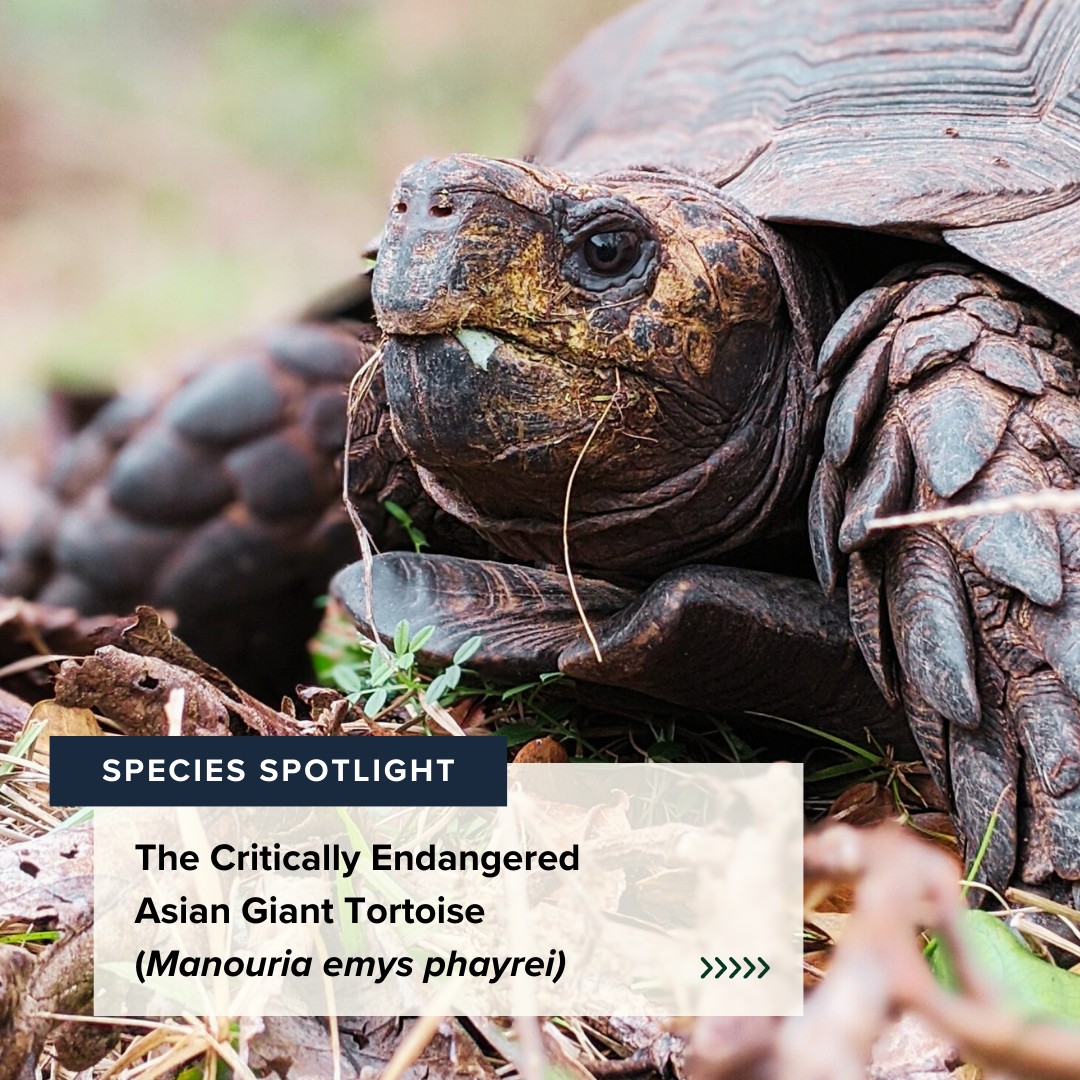Summary:
– The Asian Giant Tortoise is the largest in Asia, growing up to 61 cm in shell length and weighing up to 35 kg.
– They can be found in several countries’ tropical and subtropical hill forests.
– These ancient tortoises protect their eggs by gathering a pile of leaf litter and decomposing plant material.
– The Asian Giant Tortoise is critically endangered due to commercial hunting and habitat destruction.
– Conservation efforts are being made to protect and rewild these majestic creatures.
Ready for another Meet the Asian Giant Tortoise! Today, we dive into the fascinating world of this incredible species, which holds the title of the largest tortoise in Asia. From its impressive size to its unique behaviors, there’s much to learn about the Asian Giant Tortoise.
Standing tall at up to 61 cm in shell length and weighing up to 35 kg, the Asian Giant Tortoise truly lives up to its name. These tortoises display a charming grayish-brown color as hatchlings, gradually becoming a beautiful charcoal shade as they reach adulthood. Their shell, or carapace, provides them with a sturdy fortress of protection as they navigate through their natural habitat.
Speaking of habitat, the Asian Giant Tortoise can be found in various countries’ tropical and subtropical hill forests. These include Bangladesh, Brunei, India, Indonesia, Malaysia, Myanmar, Singapore (although now extirpated), and Thailand. This diverse range of locations showcases their adaptability to different environments.
Not only are they physically remarkable, but the Asian Giant Tortoise also plays a crucial role in maintaining ecosystem health through seed dispersal. As they wander through the forests, they consume various fruits and vegetation, only to deposit the undigested seeds somewhere else, allowing for plant life growth and spread. They are true ecological champions!
One fascinating behavior that sets the Asian Giant Tortoise apart is their similar nesting strategy to many crocodilians. Female tortoises gather a substantial amount of leaf litter and decomposing plant material on the forest floor to protect their precious eggs and ensure the right incubation temperatures. It’s almost as if they create a cozy nest of warmth and protection for their future offspring. This unique egg-laying method highlights these ancient creatures’ intelligence and adaptability.
Sadly, the survival of the Asian Giant Tortoise is threatened by commercial hunting and the destruction of their forest habitat. This relentless pressure has pushed them to be critically endangered, with their population dwindling in the wild. As responsible stewards of nature, we must step up and protect these majestic tortoises for future generations.
That’s where conservation organizations like the Turtle Survival Alliance come into the picture. Through their incredible efforts, captive breeding programs have been established at the Turtle Survival Center, providing a safe environment for these tortoises to thrive and multiply. In collaboration with the Bangladesh Forest Department, a community-based conservation initiative is underway to rewild these creatures in their native habitat, ensuring their presence in the wild once again.
But it doesn’t stop there. After reintroduction, the conservation program also encompasses field surveys, tracking, and monitoring of the tortoises. This comprehensive approach allows scientists and researchers to gather valuable data, enabling them to make informed decisions and adapt their strategies as needed.
Now, it’s time for all of us to join in protecting this remarkable species. By supporting organizations like the Turtle Survival Alliance, advocating for stronger environmental regulations, and spreading awareness about the plight of the Asian Giant Tortoise, we can make a difference. Together, we have the power to ensure these magnificent creatures’ survival and thriving future.
In conclusion, the Asian Giant Tortoise is a true wonder of nature. From its impressive size and striking appearance to its unique nesting behavior, this incredible species captivates us with its beauty and resilience. The challenges they face are significant, but through the efforts of dedicated individuals and organizations, we have a fighting chance to protect and revive their populations. Let’s stand together and make sure the Asian Giant Tortoise continues to roam our forests for generations to come.
*****
Source Description
Ready for another Meet the Asian Giant Tortoise!
The Asian Giant Tortoise (Manouria emys phayrei) is the largest in Asia, growing up to 61 cm (24 in) in shell length and weighing up to 35 kg (77 lbs.). As hatchlings, these tortoises appear a grayish brown and become more charcoal colored as they mature into adulthood.
The Asian Giant Tortoise can be found in the tropical and subtropical hill forests of Bangladesh, Brunei, India, Indonesia, Malaysia, Myanmar, Singapore (extirpated), and Thailand. The tortoise plays an important role in maintaining ecosystem health through seed dispersal.
The Asian Giant Tortoise is considered one of the world’s oldest tortoise lineages. These ancient tortoises share an interesting behavior with many crocodilians—to protect their eggs and maintain appropriate temperatures for incubation, female tortoises will gather a large pile of leaf litter and decomposing plant material on the forest floor to lay their eggs.
Unfortunately, commercial hunting and the destruction of forest habitat threaten this species.
To protect the majestic Manouria, the Turtle Survival Alliance facilitates captive breeding efforts at the Turtle Survival Center. It collaborates with the Bangladesh Forest Department on a community-based conservation initiative to safely rewild these creatures in their native habitat.
This program also supports field surveys, tracking and monitoring the tortoises after reintroduction.
Swipe to see how you can join in the protection of this species.
Pictured: Asian Giant Tortoise
IUCN Red List Status: Critically Endangered
📸: Daniel Roselli (1-2), Scott Trageser (4 & 8), Jordan Gray (6)

